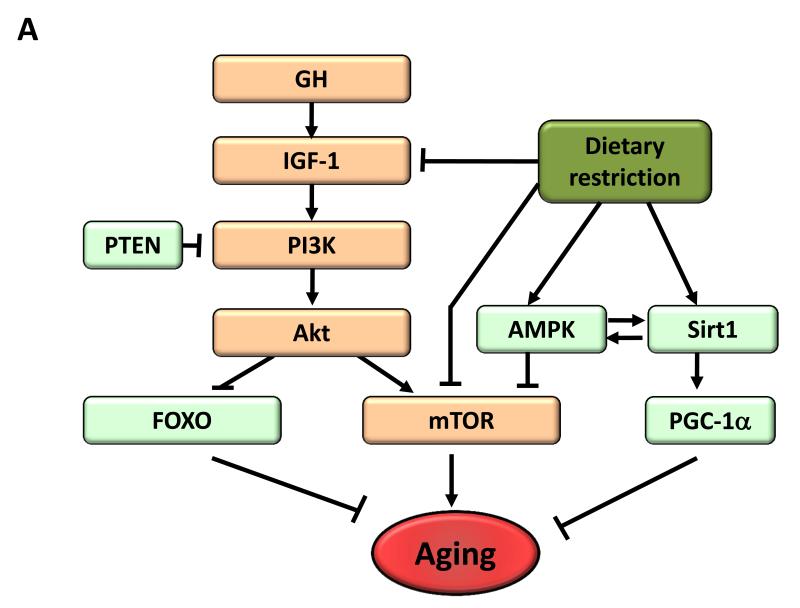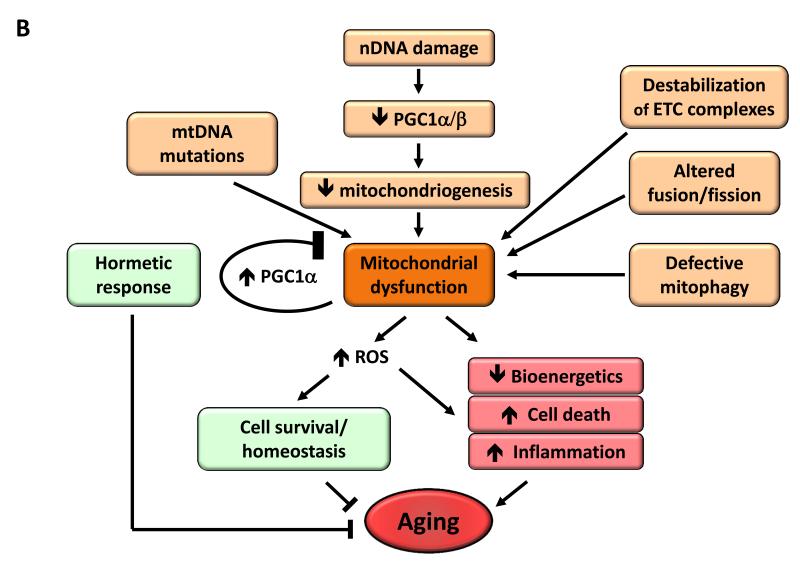Figure 4. Metabolic Alterations.
A) Deregulated nutrient-sensing. Overview of the somatroph axis involving growth hormone (GH) and the insulin/insulin growth factor 1 (IGF-1) signaling pathway, and its relationship to dietary restriction and aging. Molecules that favor aging are shown in orange, while molecules with anti-aging properties are shown in light green.
B) Mitochondrial dysfunction. Mitochondrial function becomes perturbed by aging-associated mtDNA mutations, reduced mitochondriogenesis, destabilization of the electron transport chain (ETC) complexes, altered mitochondrial dynamics or defective quality control by mitophagy. Stress signals and defective mitochondrial function generate ROS that, below a certain threshold, induce survival signals to restore cellular homeostasis, but at higher or continued levels can contribute to aging. Similarly, mild mitochondrial damage can induce a hormetic response (mitohormesis) that triggers adaptive compensatory processes.


